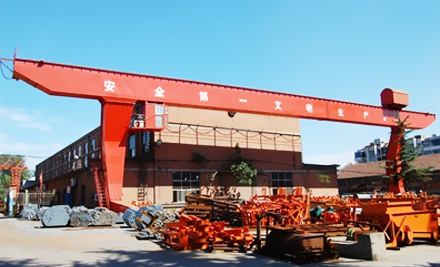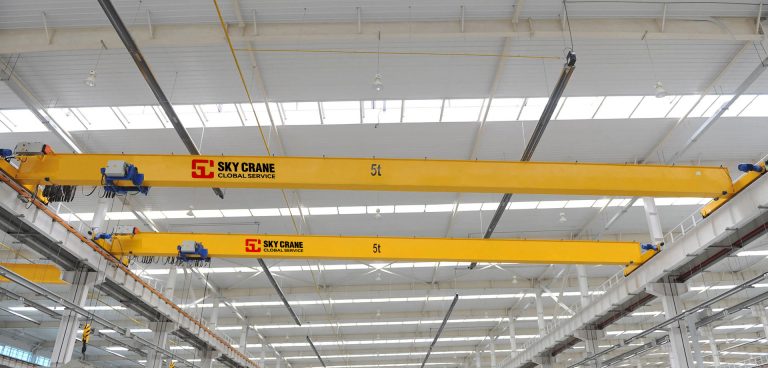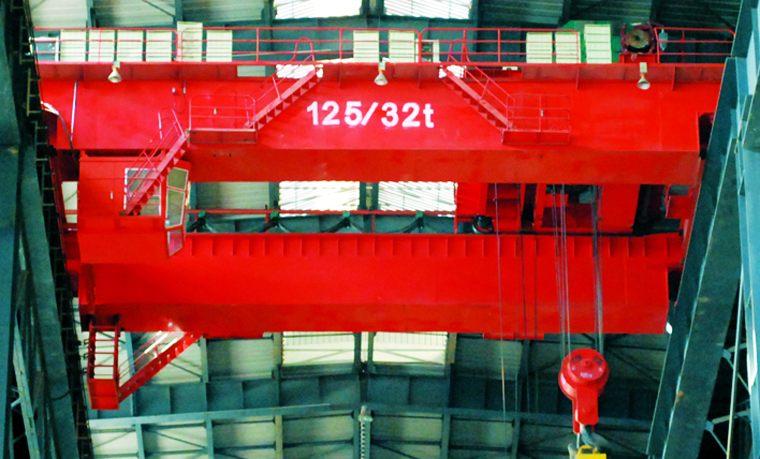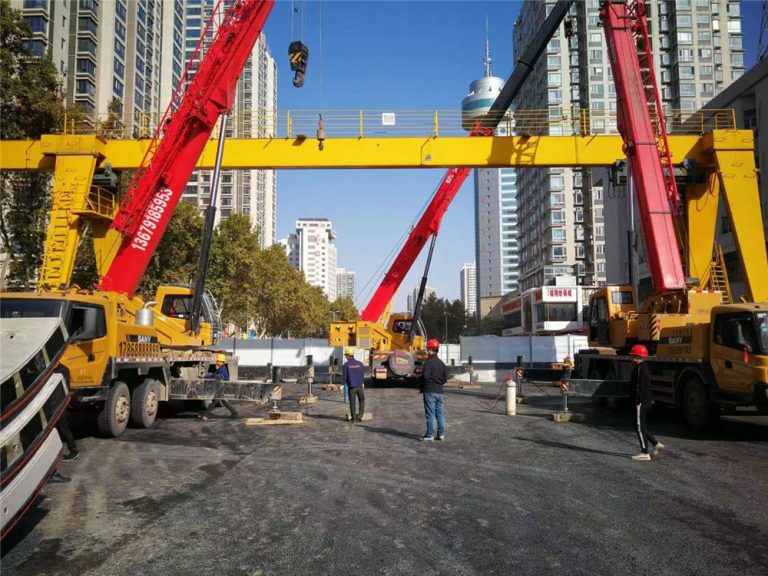Table of Contents
Advantages of Rail Type Container Gantry Cranes for Port Operations
Rail type container gantry cranes are an essential piece of equipment for port operations around the world. These cranes are designed to efficiently move containers from ships to trucks or trains, making the process of unloading and loading cargo much faster and more streamlined. There are several advantages to using rail type container gantry cranes in port operations, which we will explore in this article.
| No. | Product |
| 1 | LDP electric single beam |
| 2 | Rail – mounted Gantry Crane |
| 3 | European-style crane |
| 4 | Harbour crane |
One of the main advantages of rail type container gantry cranes is their ability to handle heavy loads with ease. These cranes are built to lift and move containers that can weigh several tons, making them ideal for the heavy lifting required in port operations. The sturdy construction of rail type container gantry cranes ensures that they can handle the weight of containers without any issues, making them a reliable and efficient option for port operators.
In addition to their ability to handle heavy loads, rail type container gantry cranes are also highly versatile. These cranes can be customized to meet the specific needs of a port, with options for different lifting capacities, outreach lengths, and other features. This versatility allows port operators to tailor their rail type container gantry crane to their specific requirements, ensuring that they can efficiently handle the volume of cargo passing through their port.
Another advantage of rail type container gantry cranes is their efficiency in moving containers from ships to trucks or trains. These cranes are designed to quickly and safely lift containers from the ship’s deck and move them to the waiting transport vehicles, reducing the time it takes to unload and load cargo. This efficiency is crucial in port operations, where time is of the essence and delays can have a significant impact on the overall operation.
Rail type container gantry cranes are also known for their reliability and durability. These cranes are built to withstand the harsh conditions of port operations, including exposure to saltwater, high winds, and heavy loads. The robust construction of rail type container gantry cranes ensures that they can continue to operate smoothly and efficiently, even in challenging environments. This reliability is essential for port operators who need a crane that can handle the demands of a busy port without experiencing downtime or breakdowns.
In conclusion, rail type container gantry cranes offer several advantages for port operations. From their ability to handle heavy loads to their versatility and efficiency, these cranes are an essential piece of equipment for ports around the world. Their reliability and durability make them a valuable investment for port operators looking to streamline their operations and improve efficiency. If you are in the market for a rail type container gantry crane, consider the advantages that these cranes offer and how they can benefit your port operation.
Key Features to Consider When Buying Rail Type Container Gantry Cranes
When considering the purchase of a rail type container gantry crane, it is essential to evaluate several key features that can significantly impact operational efficiency and overall performance. These cranes are vital in container handling at ports and intermodal facilities, and understanding their specifications can help in making an informed decision.
First and foremost, the lifting capacity of the crane is a critical factor. Rail type container gantry cranes are designed to handle heavy loads, and their lifting capacity can vary widely depending on the model and manufacturer. It is important to assess the maximum weight the crane can lift, as this will directly influence its suitability for specific applications. Additionally, considering the types of containers that will be handled is crucial, as different containers may have varying weight distributions and dimensions.
Another important feature to consider is the span of the crane. The span refers to the distance between the legs of the gantry crane, which determines how many containers can be handled simultaneously. A wider span allows for greater flexibility in operations, enabling the crane to service multiple container rows without repositioning. Therefore, it is advisable to evaluate the layout of the facility and the expected container traffic to determine the optimal span for the crane.
Moreover, the height of the crane is a significant consideration, particularly in relation to the stacking height of containers. Rail type container gantry cranes are often used in environments where containers are stacked several layers high. Thus, ensuring that the crane has an adequate lifting height to reach the topmost containers is essential for maximizing storage efficiency. Additionally, the design of the crane should allow for easy access to the containers, facilitating quick loading and unloading processes.
In addition to these physical attributes, the operational speed of the crane is another key feature that should not be overlooked. The speed at which the crane can move along the rails and lift or lower containers can greatly affect productivity. A faster crane can lead to shorter turnaround times, which is particularly important in busy port environments where time is of the essence. Therefore, it is advisable to compare the operational speeds of different models to find one that aligns with the operational demands of the facility.
Furthermore, the control system of the crane plays a vital role in its usability and safety. Modern rail type container gantry cranes often come equipped with advanced control systems that enhance precision and ease of operation. Features such as remote control capabilities, automated functions, and safety mechanisms are essential for minimizing the risk of accidents and ensuring smooth operations. It is advisable to inquire about the technology used in the crane’s control system and whether it meets industry standards.
Lastly, maintenance requirements and the availability of spare parts should also be considered when purchasing a rail type container gantry crane. A crane that is easy to maintain and has readily available parts can significantly reduce downtime and operational costs. Therefore, it is prudent to research the manufacturer’s reputation for reliability and support services.
In conclusion, when buying a rail type container gantry crane, it is imperative to consider factors such as lifting capacity, span, height, operational speed, control systems, and maintenance requirements. By carefully evaluating these features, buyers can ensure that they select a crane that meets their specific needs and enhances their operational efficiency.
Cost Analysis: Investing in Rail Type Container Gantry Cranes for Your Business
Investing in rail type container gantry cranes can be a significant decision for any business that deals with heavy lifting and transportation of goods. These cranes are essential for efficiently moving containers in ports, warehouses, and other industrial settings. However, before making the decision to purchase a rail type container gantry crane, it is important to consider the cost implications and benefits that come with this investment.
One of the primary factors to consider when investing in a rail type container gantry crane is the initial cost of the equipment. Rail type container gantry cranes are typically more expensive than other types of cranes due to their size, complexity, and specialized design. The cost of a rail type container gantry crane can vary depending on factors such as the lifting capacity, span length, and height requirements of the specific application. It is important to carefully assess your business needs and budget constraints to determine the most suitable crane for your operations.

In addition to the initial cost of the crane, it is also important to consider the ongoing maintenance and operational costs associated with rail type container gantry cranes. These cranes require regular maintenance to ensure safe and efficient operation, which can add to the overall cost of ownership. It is essential to factor in maintenance costs when budgeting for the purchase of a rail type container gantry crane to avoid unexpected expenses down the line.
Despite the initial and ongoing costs associated with rail type container gantry cranes, there are several benefits that come with investing in this type of equipment. Rail type container gantry cranes are known for their high lifting capacity, speed, and efficiency, making them ideal for handling heavy containers in a fast-paced industrial environment. These cranes can significantly increase productivity and streamline operations, leading to cost savings and improved efficiency in the long run.
Furthermore, rail type container gantry cranes are designed to withstand harsh environmental conditions and heavy-duty use, making them a durable and reliable investment for businesses that require consistent and reliable lifting capabilities. By investing in a rail type container gantry crane, businesses can ensure that their operations run smoothly and efficiently, reducing downtime and maximizing productivity.
When considering the cost of investing in a rail type container gantry crane, it is important to weigh the initial and ongoing expenses against the long-term benefits and advantages that come with this equipment. While the upfront cost of a rail type container gantry crane may be significant, the increased efficiency, productivity, and reliability that it offers can ultimately lead to cost savings and improved profitability for your business.
In conclusion, investing in a rail type container gantry crane can be a valuable decision for businesses that require heavy lifting capabilities in their operations. While the cost of purchasing and maintaining a rail type container gantry crane may be substantial, the benefits and advantages that come with this equipment make it a worthwhile investment in the long run. By carefully assessing your business needs, budget constraints, and operational requirements, you can make an informed decision about whether a rail type container gantry crane is the right choice for your business.






